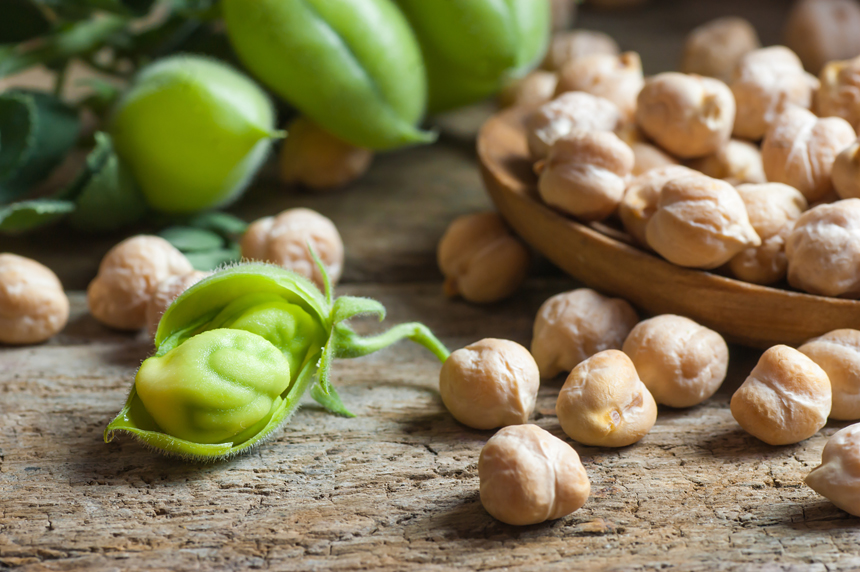Senior managing editor and logophile Andy Hollandbeck reveals the sometimes surprising roots of common English words and phrases. Remember: Etymology tells us where a word comes from, but not what it means today.
Chickpeas are one of civilization’s earliest cultivated legumes. As such, they are a key ingredient in Mediterranean and Middle Eastern cooking. Dried and ground, chickpea flour is a base for a delicious flatbread and is a staple in Indian and Pakistani cuisine. German soldiers during World War I even used chickpeas as a substitute for coffee beans, roasting them, grinding them, and steeping them in hot water. And don’t forget about falafel!
So chickpeas have a long history in various cuisines across southern Europe, North Africa, the Middle East, and south Asia — that’s a lot of land, and a lot of languages. Each culture has its own name for this versatile product, and some of those names have found their way into English in one way or another.
We’ll start with chickpea.
There are several species of the legume in question, and they all belong to the genus Cicer, which is the Latin name for the plant. In Old French, cicer shifted to chiche, which could refer to either the fruit or the plant. Pois chiche (pois being the French word for “pea”) was used to name specifically the harvestable fruit; from this model, the English chich-pease or cich-pease was attested by the 1540s.
Over time, folk etymology — the transformation of a word so as to give it an apparent relationship to another more well-known word — turned chich and cich into chick, and pease was mistaken as a plural often enough that it gave rise to the singular pea. Chick-pea became the legume’s common name by the early 18th century.
Or, I should say, one of the common names. You’ll also find it sold around the U.S. as garbanzo beans, a word borrowed from Spanish but whose ultimate source is unknown. What we do know is this: In the first half of the 18th century, it was more commonly garvanzo, which was an Americanized version of the Spanish garvanço. In Old Spanish, the word was arvanço or ervanço, and the addition of the g probably came about from the influence of other beans and seeds whose names began with ga-.
Here the etymological trail goes cold. The Old Spanish name might have come from Basque, or it might be related to the Latin ervum (a plant unrelated to the garbanzo), or it could be from some other source.
There’s a third foreign name for this legume that English speakers will recognize: In Arabic, it’s called hummus. A botanical text written in English and published in 1916 describes a mixture of mashed chickpeas with a bit of water, spices, and butter or oil as hummus-imdamas, but by 1949, hummus was being used in English texts to describe specifically the tasty garbanzo spread.
Of course, Arabic isn’t written in the Latin alphabet, so you can find it transliterated in other ways at your local market. Hummus, however, is the more common and more widely recognized by English dictionaries. It is not to be confused with humus, however, which is the decomposed organic material in soil that makes it fertile. That humus began as the Latin word for “earth, soil.”
And there you have it: chickpea, garbanzo, and hummus are all different languages’ names for the same legume.
Become a Saturday Evening Post member and enjoy unlimited access. Subscribe now




Comments
Really interesting etymology on two staples of the Mediterranean and Middle Eastern cooking/diet, which, being honest, is much healthier than ours in the U.S. Still, there’s nothing wrong with a little indulgence of (say) roasted garlic or garden herb triscuits being dipped in some hummus every now and then as a snack.